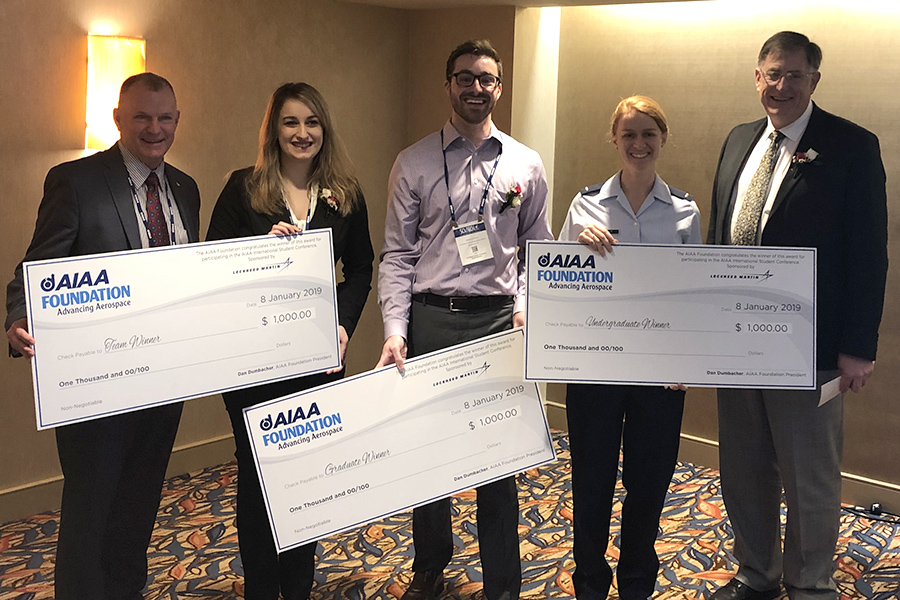Group earns 'best team presentation' at International Student Conference

A Purdue group won best team presentation at the International Student Conference, held in conjunction with AIAA Science and Technology Forum and Exposition in early January in San Diego.
AAE senior Maisie Linker presented at the conference and accepted the $1,000 award at the conference. The presentation was adapted from a paper written in Spring 2018 by Linker and fellow AAE students Ryan Clay, Benjamin Davis, Matt Fuehne and Steven Pugia, as well as Noah Franks, a student in computer science. AAE Ph.D. student Kate Fowee was the graduate TA.
The presentation was “Liquid Water Micropropulsion System for Small Satellites,” which detailed the team’s Film-Evaporated MEMS Tunable Array (FEMTA) technology. FEMTA is a small satellite alternative for propulsion technologies. Alina Alexeenko, a professor in AAE, is faculty advisor on the sponsored project.
During the presentation, Linker described the second iteration prototype and the team’s concept for a zero-gravity propellant tank.
“It was very exciting,” Linker says of the award. “I was kind of surprised. There were a lot of awesome presentations there. It was all the regional winners competing in the International Student Conference. It was exciting, though.”
One of the concepts discussed in the paper — the zero-gravity propellant tank — already had been selected as part of NASA’s Flight Opportunities program to be flight tested on Blue Origin. The payload will demonstrate a propellant management system for FEMTA Micropropulsion System, a small thruster that uses heated water through micro-nozzles to create propulsion. The tank uses the vapor pressure of an alcohol mixture to provide continuous propellant to the thruster. This propulsion unit could be used to extend the lifetime of PicoSats in orbit or for precise attitude control of groups of satellites, deployable structures or interplanetary missions.
“Our payload is going to be flown as one of the first external payloads aboard New Shepard, meaning it will be exposed and tested in microgravity and the surrounding ambient conditions,” Linker says. “This flight opportunity will allow us to advance the technology readiness of FEMTA.”
